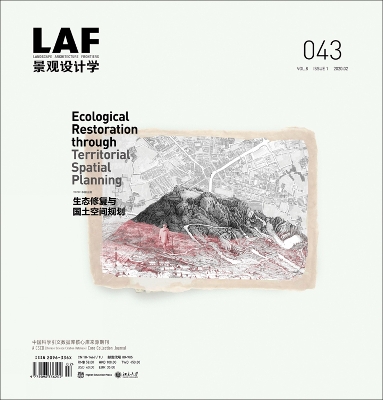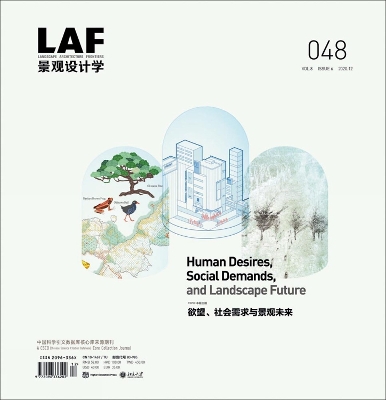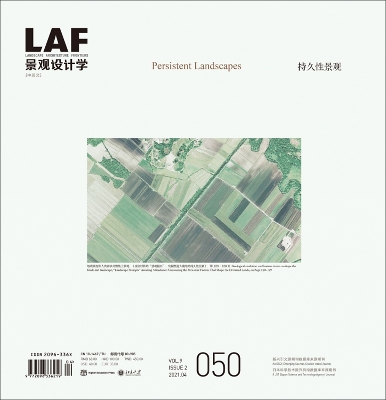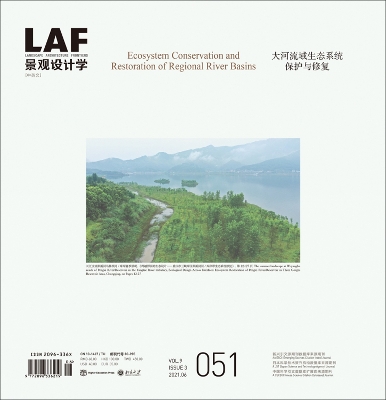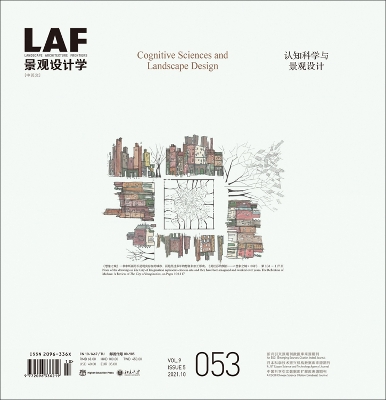LA Frontiers
5 total works
Landscape Architecture Frontiers 043
by Kongjian Yu, Niall Kirkwood, Christina Von Haaren, Zhifang Wang, Bruno De Meulder, Xiaxuan Lu, and Federico Ruberto
This issue focuses on:
1)
Exploring the significance of territorial spatial planning by stressing
its necessity and main ideas under the contemporary background of
ecological civilisation construction in China, while re-examining the
role of landscape architects in this reform.
2) Strengthening
research on related methodologies and techniques of urban ecological
planning, ecological security pattern, ecological infrastructure, and
ecological restoration to improve cities liveability and resilience and
rebuild harmonious human-nature relationship under a mandatory planning
framework combined with resilient measures, avoiding inflexible
ecological conservation practices.
3) Analysing and learning from
diversified efforts made by different countries and regions to promote
urban development while protecting ecosystems, particularly their
experience on territorial, regional, and urban planning that is
significantly valuable to the Chinese counterpart, to leverage the value
of territorial natural resources.
4) Exploring feasible approaches
that help restore urban ecosystem structure and ecological elements, and
improve planning and design methods on specific sites, so as to enhance
spatial construction and ecological quality, to eventually improve a
national eco-security pattern with scientific and user-friendly planning
and design.
5) Encouraging applications of research frontiers in
geology, macro-ecology, regional economics, public management, and
sustainability science.
Landscape Architecture Frontiers 048
by Kongjian Yu, Leiqing Xu, Susan Nigra Snyder, George E. Thomas, and Zhao Chen
Design is a means to satisfy social demands, and such demands come from human desires. Only when individuals' desires fuse and grow into a collective consensus, can they be manifested and conveyed in various landscape forms as new public goods. As a public goods serving human desires and social demands, landscape design faces both challenges and opportunities preceding undergoing public crises. In this issue, LA Frontiers explores the implications of human desires on public behaviours through cross-disciplinary lenses of philosophy, social psychology, cognitive science, cultural studies, anthropology, sociology, history, etc. It would offer inspiring insights for landscape professionals to identity their role in responding to contemporary demands and those of future societies.
At present, in view of the spatial isolation caused by the COVID-19 pandemic and the consequent prevalence of contactless services, the current conventional space-time narrative may be dramatically changed. The fact that both "observing" and "being observed" now become consumer goods within landscape enables landscape architects to recognise and examine people's suppressed desires and unmet needs, introspect the rationality and necessity of marginal desires, and thus, redefine the sophisticated interactions between landscape design and human desires, as well social demands.
Landscape Architecture Frontiers 050
by Kongjian Yu, Tao Lou, John Bryan Burley, Robert Schutzki, Yichi Zhang, Holger Behm, Hailong Liu, Martin Allik, and Xiaoxuan Lu
Landscape is a time-space compound shaped by human activities on natural processes; the persistence of a landscape supports its continuity and stability over time, as well as the stable variety of physical environment. For remaining landscapes, the persistence means the stability of natural ecosystems and the harmony of cultural-social contexts. The former emphasises the ability to maintain the dynamism and stability of the landscape system against external disturbances; the latter one, by regarding the landscape as a man-land composite ecosystem, refers to the ability to maintain localities and cultural legacy in response to changes of natural and social environments. For emerging landscapes, persistence manifests the ability to interact and integrate with and adapt to the remaining landscapes.
The rapid urbanisation and population growth have caused tremendous changes in urban and rural landscapes worldwide, increasingly undermining the persistence of landscapes: traditional rural landscapes and urban historic neighbourhoods have been replaced with massive industrial scenes; the lack of innovative design ideas, the stagnation of theoretical study, and the limitation of aesthetic awareness have resulted in the neglect of critical ecological, social, and aesthetic values of such heritages, the damage of ecological security patterns, and the disappear of people's collective memories about vernacular landscapes. Efforts addressing the pressing issues, e.g. the destruction of natural environment, the loss of landscape values, and the culture shock, are expected.
Text in English and Chinese.
Landscape Architecture Frontiers 051
by Kongian Yu, Jay McDaniel, John Boswell Cobb Jr, Jinyong Zhao, Xingzhong Yuan, Jessica M. Henson, Mark Hanna, Theresa Ruswick, Laurel McSherry, and Xiaoxuan Lu
In recent years, China has issued several basin-scale plans to deal with pressing resources, environmental, and social problems caused by regional urbanisation. These plans help push ahead flood control and disaster reduction, the allocation, utilisation, and conservation of water resources, water ecological environment protection, and integrated basin management. The development of Yangtze River Delta, the Yangtze Economic Belt, the Yellow River Basin, Beijing–Tianjin–Hebei Region, Guangdong–Hong Kong–Macao Greater Bay Area, etc., has now become new national agendas, which are guaranteed by top-down policies and offer opportunities for regional growth. Several new laws and regulations coming into effect as of 2021 also reinforce the collaborative basin management that drives regional social and economic development.
Meanwhile, territorial spatial planning systems established under the requirement of Multiple-Plan Integration also underscore basin development strategies in spatial management and ecological restoration. This issue, mainly focusing on the regional planning research based on water and land resources through revealing their ecological characteristics, is expected to include contribution to the following aspects (but is not limited to):
1) Research on regional ecology, land use, and ecosystem service at the basin scale
2) Research on theories, approaches, and practices relevant to basin spatial planning and ecological restoration
3) Research on spatial strategies and economic zoning to propel basin-scale social and economic development
4) Research on basin-scale collaborative planning and sustainable development of water resources and environmental protection
5) Integrated basin management planning geared to guaranteeing basins’ ecosystem services
6) ecological river-corridor conservation and restoration at the basin scale
In all these topics, researchers and planners are called to act as leaders in interdisciplinary collaboration within the fields of biology, geography, geology, and the climate sciences to solve ecological and environmental problems by treating the water network of a basin, as a whole. In this issue, LA Frontiers also attempts to learn from cutting-edge exemplars worldwide in basin management, especially in ecosystem conservation and restoration, to provide reference for Chinese researchers and practitioners.
Cognitive sciences that aim at establishing scientific and explicit interpretations can diversify approaches to exploring users’ feelings and experiences of a specific environment. For example, people’s emotions and feelings change with their environment, closely related to people’s sensory processes and brain wiring, personal experiences, and visiting purposes, etc., can be understood as a prompt intuitive response. Environmental information and responses are processed very fast to support quick decision making in relation to people’s survival and benefits. Environmental Psychology explains the environmental types people prefer and why certain environments make people feel, for example, anxious or excited. Understanding people’s emotional responses to the environment facilitates, or “nudges” (a term usually used in the inter-discipline of Psychology and Behavioural Economics), users to act or make choices as desired. Moreover, research on attention in cognitive sciences can also inform designers: by controlling the spatial elements and intangible elements (such as light and sound) to minimise environmental disturbance or noise, users’ attention can be directed to specific elements, element combinations or series. During this process, users’ specific emotional memories or symbolic implications are activated, which augments desired feelings and experiences.
This issue explores the mechanism of how landscape design affects users’ feelings, experiences, and behaviours, as well as usability, by introducing theories, knowledge, and research methods and findings in Cognitive sciences, psychology, neurobiology, and computer science, so as to support landscape architects’ decision making.
